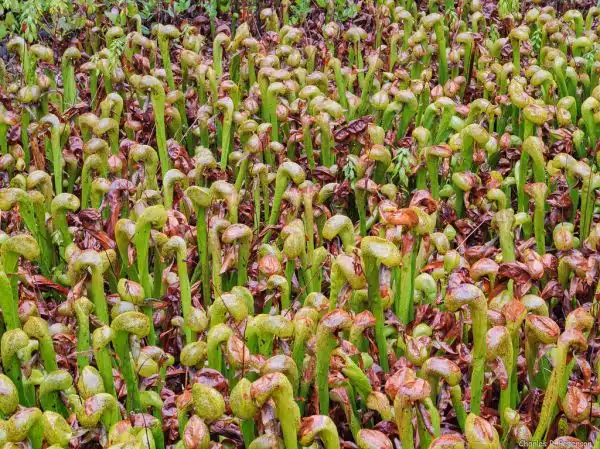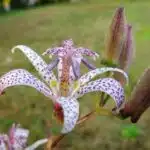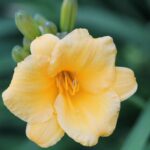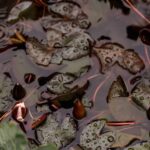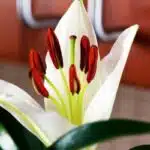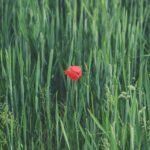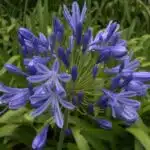The Cobra Lily (Darlingtonia californica), also known as California pitcher plant, is a fascinating carnivorous plant native to North America. Its unique appearance and behavior have made it a popular choice among botanists and horticulturists alike. This article aims to provide an in-depth guide on the care and growing of this intriguing plant.
Despite its common name, the Cobra Lily is not actually a member of the lily family but rather belongs to the Sarraceniaceae family, which includes other carnivorous plants such as pitcher plants and sundews. The plant is characterized by its tall, slender leaves that form into a hollow tube resembling a cobra’s head. These leaves are modified into traps that lure insects inside where they become trapped and digested by enzymes produced by the plant. In addition to its unique morphology, the Cobra Lily requires specific care and growing conditions that will be discussed in detail in this article.
The Unique Characteristics Of The Cobra Lily
The cobra lily, a carnivorous plant also known as Darlingtonia californica, is a unique and fascinating specimen that has garnered attention from botanists and horticulturists alike. Its striking appearance makes it stand out from other plants, with its elongated tubular leaves that resemble the menacing hood of a cobra. This adaptation serves the plant well in attracting prey, but it’s just one of many unique characteristics that make the cobra lily such an intriguing subject.
When examining the cobra lily more closely, we can see numerous adaptations that have allowed it to thrive in its environment. For instance, the cobra lily grows in nutrient-poor soils in wetlands and bogs where most plants would struggle. To overcome this challenge, it has evolved specialized leaves that trap insects and other small animals to supplement its diet. These adaptations are crucial for its survival and ecological significance.
The ecological significance of the cobra lily cannot be overstated. It serves as an important indicator species for wetland conservation efforts since it requires specific environmental conditions to grow and reproduce successfully. Additionally, studying its unique adaptations may lead to new insights into how plants have adapted to their environments over time. Understanding these adaptations may help us better appreciate the natural world around us and inspire us to protect fragile ecosystems like those where the cobra lily thrives.
The Carnivorous Nature Of The Cobra Lily
The carnivorous nature of the cobra lily is one of its most fascinating features. This plant has adapted to living in nutrient-poor environments by developing specialized structures to capture and digest prey. These structures include pitcher-like leaves that are filled with a digestive fluid, as well as hairs and slippery surfaces that prevent prey from escaping.
One of the adaptation strategies employed by the cobra lily is its ability to attract insects with a combination of visual and olfactory cues. Once an insect lands on the pitcher-like leaf, it becomes trapped and slides down into the digestive fluid where it is broken down into nutrients that can be absorbed by the plant. The cobra lily also employs various prey capture techniques, such as producing a sweet nectar that attracts insects or using its slippery surfaces to prevent escape.
In order to fully appreciate the botanical classification of the cobra lily, it is important to understand how its carnivorous nature has evolved over time. By studying its unique adaptations for nutrient acquisition, we can gain insight into how plants have evolved to survive in different environments. In the next section, we will explore how these adaptations have led to the cobra lily’s placement within the larger family of carnivorous plants.
Understanding The Botanical Classification Of The Cobra Lily
The carnivorous nature of the cobra lily has been explored in the previous section. Now, let us delve into the botanical classification of this unique plant. Botanical classification refers to the grouping of plants based on their characteristics and relationships with other plants. Taxonomy is an important aspect of botanical classification as it involves naming and identifying species. In this regard, it is worth noting that the cobra lily belongs to the family Sarraceniaceae.
The Sarraceniaceae family is mainly composed of carnivorous plants, including pitcher plants and sundews. The cobra lily is also known as Darlingtonia californica, which is its scientific name. Nomenclature is essential in botany as it helps scientists communicate effectively about different plant species. The genus Darlingtonia comprises only one species, which is the Darlingtonia californica (cobra lily).
Understanding the botanical classification of the cobra lily sheds light on its unique features and how it relates to other plant species. Here are three interesting facts about the cobra lily’s taxonomy:
- Its common name “cobra lily” stems from its resemblance to a striking cobra ready to strike.
- The genus name “Darlingtonia” honors a botanist named William Darlington who contributed significantly to American botany during his time.
- Its species epithet “californica” indicates that it was first discovered and identified in California.
With this knowledge on botanical classification, we can now move on to understanding more about the morphology of the cobra lily – its physical features and structure.
The Morphology Of The Cobra Lily
The cobra lily (Darlingtonia californica) is an iconic species in North American wetlands, and its morphology is of great interest to botanists. The leaves of the cobra lily are long, narrow and spiraled, with a unique trap structure at the end of each leaf. The cobra lily produces an inflorescence of white-to-yellow flowers, which are self-fertilizing and produce small seeds for reproduction. The cobra lily is adapted for wetland conditions, and is capable of surviving long periods of waterlogging and drought.
Leaves And Traps
The cobra lily, also known as Darlingtonia Californica, is a unique and fascinating plant that has captured the hearts of many botanists and horticulturists. Its leaves and traps are among its most distinctive features, making it stand out from other carnivorous plants. The leaf arrangement of the cobra lily is unlike any other plant, with long, slender leaves that grow in a spiral pattern around the stem. This arrangement helps to maximize the amount of sunlight that each leaf receives while minimizing shading between leaves.
The trap morphology of the cobra lily is equally intriguing. The traps are modified leaves that have evolved into highly specialized structures for trapping insects. These traps are shaped like tall pitchers with an opening at the top and a downward-facing lip covered in translucent windows. When an insect lands on the lip, it falls into the pitcher where it becomes trapped by downward-pointing hairs that prevent it from escaping. The trapped insect is then slowly digested by enzymes secreted by glands lining the walls of the pitcher.
Overall, understanding the unique leaf arrangement and trap morphology of the cobra lily is essential for successful care and growing of this fascinating plant. Proper lighting conditions should be provided to ensure optimal photosynthesis, while watering should be carefully monitored to avoid overwatering or underwatering. With proper care and attention to detail, however, anyone can enjoy watching these remarkable plants thrive and flourish in their home or garden without fear of harming surrounding wildlife or pollinators.
Flowering And Reproduction
The morphology of the cobra lily is not only intriguing in terms of its leaf arrangement and trap morphology but also its flowering and reproduction. The cobra lily is a monocotyledonous plant that produces flowers on an inflorescence stem emerging from the center of the rosette. The flowers are relatively small, greenish-white, and have a distinct odor that attracts pollinators.
The cobra lily employs various pollination methods to ensure successful reproduction. One of its main pollinator species is the yellowjacket wasp, which is attracted to the plant’s scent and enters the pitcher trap looking for prey. While inside, it brushes against the flower’s stigma, transferring pollen from other plants. Another pollinator species is flies, which are also attracted to the plant’s scent and enter the pitcher trap similarly to wasps.
Once pollination occurs, the cobra lily produces seed capsules that contain numerous tiny seeds. These capsules eventually dry out and split open to release the seeds. Since these seeds are tiny and lightweight, they can be dispersed by wind or water over long distances. Understanding the reproductive biology of the cobra lily is crucial for conservation efforts as some populations are threatened due to habitat destruction and illegal collection. By knowing how this fascinating plant reproduces, we can better protect it and ensure its survival in its natural habitats.
The Importance Of Proper Care For Cobra Lilies
One cannot overemphasize the importance of proper care for cobra lilies, especially in the context of their conservation. These unique carnivorous plants are native to California and Oregon and rely on specific growing conditions to survive. Proper care not only ensures their survival but also enhances their growth and beauty. In this section, we will explore the significance of cobra lily conservation and provide best practices for their cultivation.
To understand the importance of cobra lily conservation, one must first appreciate their ecological value. Cobra lilies play a vital role in controlling insect populations in their natural habitats. Without them, these areas would be overrun by pests that damage crops and other plant species. Moreover, they contribute to biodiversity by providing shelter and food for local fauna such as birds and insects. By cultivating them carefully, we preserve this essential ecological balance.
The best practices for cobra lily cultivation include several factors such as temperature, light exposure, watering frequency, soil quality, and pest control. Below is a table summarizing these factors:
| Factor | Ideal Condition |
|---|---|
| Temperature | 60-70°F |
| Light Exposure | Partial shade |
| Watering | Keep soil moist |
| Soil Quality | Acidic pH (4-6) |
| Pest Control | Use organic solutions |
By adhering to these guidelines, we can ensure that our cobra lilies thrive while preserving their ecological value. In the following section, we will delve deeper into one critical aspect of cobra lily cultivation: choosing the right soil for them.
Choosing The Right Soil For Cobra Lilies
The success of growing cobra lilies depends on the soil composition and pH levels. These plants are native to acidic environments, which means that they require soils with low pH levels ranging from 4.5 to 6.0. The ideal soil type for cobra lilies is a mix of peat moss, sand, and perlite. This combination provides excellent drainage and aeration for the plant’s roots.
It’s important to note that cobra lily roots are highly sensitive to mineral salts found in fertilizers or tap water. As such, it’s recommended to use rainwater or distilled water when watering your cobra lily. If you don’t have access to these options, you can let tap water sit overnight before using it as this allows the chlorine and other minerals in the water to dissipate.
In addition to choosing the right soil composition and pH levels, proper watering and fertilizing are also crucial for cobra lilies’ optimal growth. In the next section, we’ll discuss best practices for watering and fertilizing your cobra lily so you can ensure that your plant receives all the necessary nutrients without causing harm to its delicate roots.
Watering And Fertilizing Your Cobra Lily
Watering and fertilizing your cobra lily is crucial for its growth and survival. Overwatering or underwatering can lead to the plant’s demise, so it is essential to be diligent with watering frequency. It is advised to water the cobra lily once a week during the growing season and less often during winter dormancy.
When it comes to fertilizer types, it is recommended to use a balanced, slow-release fertilizer during the growing season. Choose a fertilizer with equal amounts of nitrogen, phosphorus, and potassium; this will help maintain healthy foliage and encourage flowering. Avoid using high-nitrogen fertilizers as they can cause damage to the sensitive roots of cobra lilies.
In summary, proper watering and fertilization are vital for the success of your cobra lily. Remember to water once a week during growing season, use a balanced slow-release fertilizer, and avoid high-nitrogen options. Next step, let’s talk about light and temperature requirements for cobra lilies.
Light And Temperature Requirements For Cobra Lilies
Cobra lilies, also known as Darlingtonia Californica, thrive in a wide range of temperatures and light conditions. These plants require ample sunlight to grow healthy and strong, but not direct sunlight which can cause leaf burn. Indoor placement near a bright window is ideal for cobra lilies, but they may need seasonal adjustments to avoid excessive heat or cold from radiators or air conditioning units.
In their natural habitat, cobra lilies grow best in areas with cool summers and mild winters. Outdoor cultivation requires careful consideration of the temperature and light conditions specific to your region. In general, these plants prefer partial shade with plenty of indirect sunlight during the day. Avoid placing them in direct sunlight during the hottest part of the day or in areas that receive harsh afternoon sun.
Overall, the temperature and light requirements for cobra lilies are fairly easy to meet with proper care and attention. Indoor placement near a bright window combined with seasonal adjustments for temperature control is an effective way to provide optimal growing conditions. For outdoor cultivation, partial shade with plenty of indirect sunlight is necessary for healthy plant growth. The next section will discuss how to propagate cobra lilies for continued success in cultivating these beautiful plants.
Propagating Cobra Lilies
Propagation of cobra lilies can be done through either hydroponic propagation or division method. Hydroponic propagation is a technique that involves growing plants in nutrient-rich water, without the use of soil. This technique is effective in creating an environment that promotes faster growth and development of roots. To propagate cobra lilies using this method, it is important to prepare a water-soluble fertilizer solution and provide adequate lighting for the plant to thrive.
The division method, on the other hand, involves separating the roots and leaves of a mature plant into several sections. Each section must have at least one healthy root and a few leaves to grow independently. It is essential to ensure that each section has enough space to grow by planting them in separate pots with well-draining soil. Proper care should be taken during the transplantation process as any damage could affect the growth potential of the new plant.
Propagation of cobra lilies can be quite rewarding for those who are passionate about gardening. Whether it is through hydroponic propagation or division method, both techniques require careful preparation and attention to detail. Successful propagation will lead to new plants that can serve as gifts or decorations for homes and gardens alike. In the subsequent section, we will discuss common problems that growers may encounter while caring for cobra lilies and their corresponding solutions.
Common Problems And Solutions For Cobra Lilies
Similar to a vigilant guard, the cobra lily stands tall and striking, with its unique hooded leaves that resemble a snake ready to strike. However, even with its ability to captivate onlookers, it is not exempt from facing common problems that may arise during its growth process.
One of the most common problems that plague cobra lilies is fungal infections. This can cause discoloration in the plant’s leaves or stem and may lead to plant death if not addressed immediately. To prevent this, ensure proper ventilation and avoid overwatering. Additionally, using copper-based fungicides can help control fungal growth.
Another issue that may arise is pest infestation. Common culprits include aphids, spider mites, and thrips. These pests can cause leaf damage or spread diseases throughout the plant. To combat this problem, use insecticidal soaps or neem oil as an organic solution. Regularly check for signs of infestation and isolate affected plants to prevent further spread.
Improper watering techniques can also lead to issues such as root rot or dehydration. It is essential to maintain consistent moisture levels by watering regularly but ensuring proper drainage. Use well-draining soil mixtures and avoid letting water sit in saucers for extended periods. Troubleshooting techniques such as adjusting watering schedules or repotting may be necessary in severe cases.
- Discoloration in leaves can be distressing but can be remedied with proper care.
- Pest infestations are preventable through regular inspection and treatment.
- Root rot caused by overwatering is treatable through repotting.
- Dehydration can cause wilting but can be resolved by consistent watering schedules.
- Fungal infections may require fungicide application for effective control.
As a botanist/herbarium curator, understanding the common problems and troubleshooting techniques associated with growing cobra lilies is crucial in maintaining healthy plants. By taking preventative measures and addressing issues early on, gardeners can ensure the longevity and beauty of these remarkable plants. Remember to practice proper care techniques to avoid common problems that may arise during the growth process.
Conclusion
The Cobra Lily, also known as Darlingtonia Californica, is a fascinating plant with unique characteristics that set it apart from other carnivorous plants. Its ability to trap and digest insects is both intriguing and practical for its survival in nutrient-poor environments. Botanically classified as a monotypic genus, the Cobra Lily’s morphology is distinct with its tubular-shaped leaves and hooded structure.
Proper care of this plant is crucial for its growth and development. Watering and fertilizing must be done carefully to avoid overwatering or burning the delicate roots. Light and temperature requirements are also important factors to consider when growing Cobra Lilies. Propagation can be challenging but rewarding with patience and attention to detail.
In conclusion, the Cobra Lily is an exceptional plant that deserves attention from botanists and gardeners alike. Its carnivorous nature, botanical classification, and unique morphology make it a fascinating subject of study. With proper care, this plant can thrive in a variety of environments and bring joy to those who appreciate its beauty and complexity.
Image Credits
- “Cobra Lilies #1 – Oregon” by petechar (featured)

